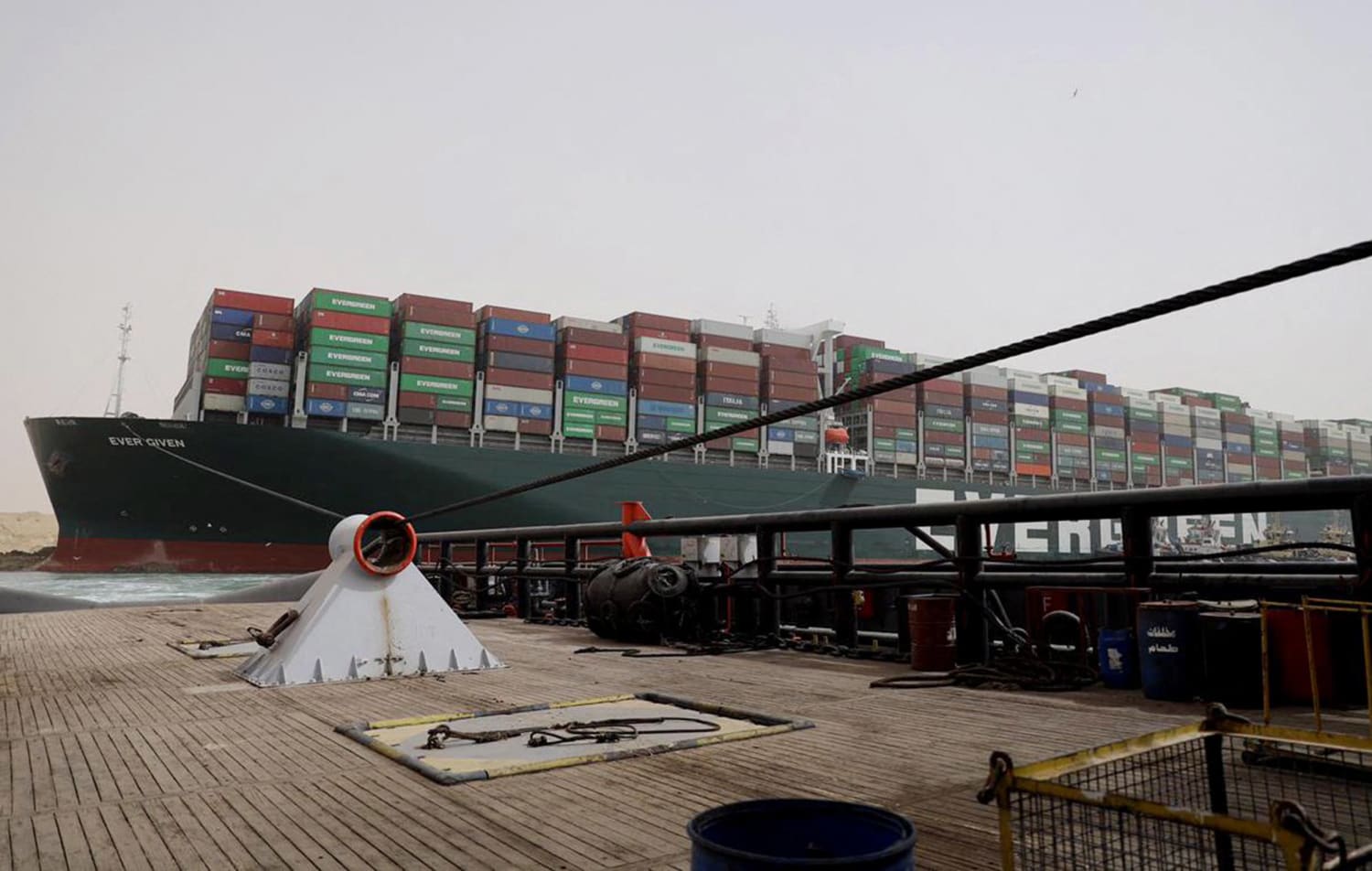International efforts to dislodge the skyscraper-sized cargo ship blocking Egypt’s Suez Canal intensified but made little progress Thursday as the maritime traffic jam wreaked havoc on global trade.
Egyptian authorities said navigation was still “temporarily suspended” after the container got stuck sideways across the canal due to a severe dust storm and poor visibility.
That meant traffic remained at a standstill on a route that accounts for roughly 12 percent of global trade as the shipping saga passed the 48-hour mark.
A fleet of eight large tugboats were dispatched to refloat the jammed container vessel, the Suez Canal Authority said in a statement on Thursday.
Taiwanese shipping company Evergreen, which operates the stranded tanker, announced that two professional rescue teams from Japan and the Netherlands were now helping Egyptian authorities to create a more “effective plan.”
Meanwhile the technical manager of the vessel, Bernhard Schulte Shipmanagement, said it had “intensified efforts” to refloat the ship by sending “specialized suction dredgers” to the site after an attempt this morning failed.
“Another attempt will be made later today,” the statement added.
But experts said that the frenzied flotation efforts could take longer than many would hope.
Peter Berdowski, CEO of Dutch company Boskalis, one of the maritime service providers currently trying to free the ship, said the rescue mission was far from straight forward.
“It is like an enormous beached whale. It’s an enormous weight on the sand,” he said, speaking to Dutch TV.
“We might have to work with a combination of reducing the weight by removing containers, oil and water from the ship, tug boats and dredging of sand.”
“We can’t exclude it might take weeks, depending on the situation,” he added.
“We have already seen a jump in the price of oil because of the tankers that are sitting at anchor in the Red Sea,” Laleh Khalili, a professor in international politics at Queen Mary University in London, told NBC News.
Even when rescue efforts are successful, “the backlog of ships could take a week or so to clear,” she added.
Download the NBC News app for breaking news and politics
At least 150 other tankers have been waiting to pass through the narrow canal since the 400 meter long Ever Given ship got stuck sideways on Tuesday morning, running aground after gusting winds of 30 knots caused the vessel to deviate from its course.
The Suez Canal usually allows 50 cargo ships pass daily between the Mediterranean and the Red Sea, providing a vital trade corridor between Europe and Asia.
Photos released by Suez authorities showed a digger removing earth and rock from the canal’s bank and around the ship’s bow.
“They would try to be removing anything that is easy to remove, but the location where they are stuck is not near a port, it’s actually quite a distance away from anything,” Professor Jasper Graham-Jones, a mechanical marine engineer from Plymouth University told Sky News.
“This is where the clear option is lots and lots of tug boats and digging around the sides.”
(Sky News is owned by Comcast, the parent company of NBC News.)
Evergreen said it has “urged the shipowner to investigate” the source of the accident.
The ship’s owners apologized on Thursday for the disruption the maritime traffic jam has caused.
“We sincerely regret that this accident has caused a great deal of concern to the ships sailing or scheduled to sail in the Suez Canal,” said the Japanese company Shoei Kisen Kaisha Ltd.
Nearly 19,000 ships with a net tonnage of 1.17 billion metric tons passed through the canal last year, according to the Suez Canal Authority.
Traffic jams are rare. In 2017 a Japanese container vessel blocked the canal but Egyptian authorities refloated the ship within hours.
“In the long term, this delay may force some re-thinking about ship sizes,” said Khalili of Queen Mary University. “And if there are issues associated with who is going to take responsibility for the accident … that may force a reckoning in shipping ownership structures.”
Suez is still remembered for being at the heart of an international crisis in 1956 after Egyptian President Gamal Abdel Nassar nationalized the canal, previously in British and French ownership. The move led to an invasion that resulted in humiliation for the western European powers.
Charlene Gubash and Olivier Fabre contributed.
Source: | This article originally belongs to Nbcnews.com












